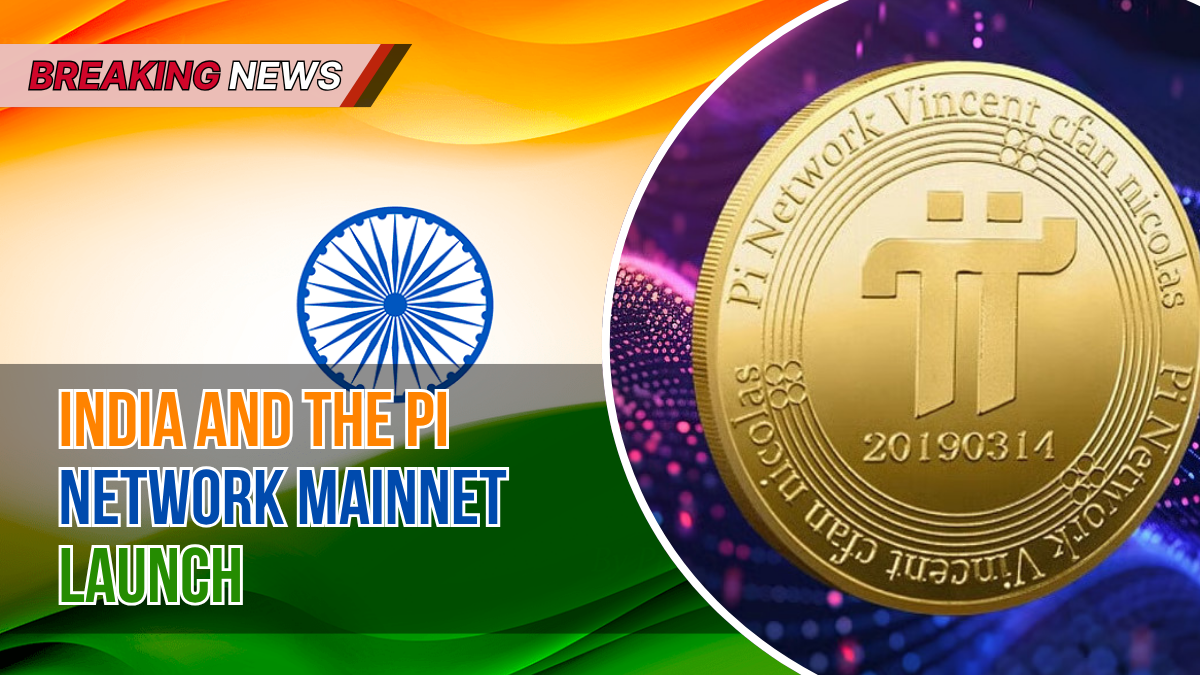The Pi Network Mainnet officially launched in India in June 2025, marking a critical evolution for a cryptocurrency project that began in 2019. This significant development allows millions of Indian users, also known as “Pioneers,” to access, transfer, and potentially trade their mined Pi tokens. The transition from the testnet to the mainnet is more than just a technical update; it represents an opportunity for India to play a leading role in the adoption of an energy-efficient and mobile-first blockchain.

Summary Table: Pi Network Mainnet Launch
| Feature | Status as of June 2025 | Impact for Indian Users |
|---|---|---|
| KYC Verification | Fully Operational | Required for unlocking and using Pi tokens |
| Pi Wallet Functionality | Enabled | Users can send and receive Pi within the ecosystem |
| Exchange Listings | Awaiting Regulatory Approval | Limited access; P2P transfers permitted |
| Merchant Adoption | Pilot Programs in Progress | Some local businesses accepting Pi for transactions |
| Developer SDK/API | Available | Developers can create DApps using Pi Network technology |
| Official Site | minepi.com | Source of official updates and developer tools |
The Transition to Mainnet: Why It Matters
Pi Network’s Mainnet launch transforms the project from a community-mined, virtual currency into a functioning, public blockchain. The primary benefits for Indian users include:
- Unlocking Mined Pi: Users who have completed KYC can now use their mined coins.
- Wallet Activation: Full wallet features are now accessible for verified users.
- P2P Utility: Early utility includes the ability to conduct peer-to-peer payments and participate in pilot marketplaces.
Pi Network’s Role in India’s Crypto Ecosystem
India’s crypto ecosystem is evolving rapidly, and the Pi Network finds itself well-aligned with national trends in Web3 adoption:
- Mobile-First Strategy: Given the dominance of mobile internet in India, Pi’s app-based mining model aligns naturally with the digital habits of Indian users.
- Energy-Efficient Blockchain: Unlike traditional PoW models, Pi uses a consensus algorithm that requires minimal energy, aligning with India’s sustainability goals.
- Mass Adoption Potential: With over 10 million users from India alone, Pi Network has already built one of the largest decentralized communities in the country.
Integration with Indian Tech Infrastructure
Several local initiatives are exploring integration opportunities with Pi Network:
- DApp Development: Incubators in Bengaluru and Hyderabad are piloting DApps for rural payments and education verification.
- Educational Programs: NGOs and Web3 education hubs are using Pi to teach blockchain fundamentals due to its accessible and low-risk design.
- Digital Payments: Developers are testing Pi integration with digital wallets and UPI-based payment models, exploring hybrid utility.
Key Benefits for Indian Pioneers
- Transaction Freedom: Once verified, users can conduct transactions using their Pi wallets.
- Marketplace Participation: Indian businesses and developers can participate in early marketplace trials.
- Future Growth Potential: Possibility of listing on exchanges could offer liquidity and reward long-term holders.
What Indian Users Should Do Now
To fully benefit from the mainnet launch, Indian users are encouraged to:
- Complete KYC Verification: This is mandatory to transfer and use Pi tokens.
- Activate Wallet: Use the official Pi browser or app to access the wallet features.
- Participate in Pilot Markets: Join Pi-supported merchant platforms or beta projects.
- Engage with the Community: Join Pi India forums and developer groups.
- Stay Updated: Follow official Pi channels and local blockchain associations.
Challenges and Cautions
- Regulatory Status: Pi is not yet approved for trading on centralized Indian exchanges.
- Scams and Imitations: Users should avoid third-party wallets or unauthorized exchanges.
- Volatility: As with any crypto asset, future price movements are speculative.
Future Outlook
The coming months could bring major developments for Indian users, such as:
- Exchange Listings: Potential CEX or DEX access, depending on compliance and policy updates.
- Expanded Use Cases: More businesses might adopt Pi as a payment method.
- Integration with National Digital Infrastructure: If successful, Pi could become a part of India’s broader Web3 roadmap.
FAQs About Pi Network Mainnet Launch
1. What is the Pi Network Mainnet?
Ans. The mainnet is the live, operational version of the Pi blockchain that allows for real token use and transfer.
2. Can Indian users trade Pi now?
Ans. As of June 2025, Pi is not listed on centralized exchanges in India. However, KYC-verified users can use P2P transfers.
3. Is KYC mandatory for Pi token usage?
Ans. Yes. Only users who complete KYC can transfer, receive, or spend their mined Pi coins.
4. Can I build applications on Pi Network?
Ans. Yes. The Pi SDK and APIs are available for developers to create apps and services within the Pi ecosystem.
5. Are Indian regulators supporting the Pi Network?
Ans. There is no formal endorsement, but Pi aligns with India’s goals for sustainable and accessible blockchain innovation.
Conclusion
The Pi Network Mainnet launch is a transformative event for the Indian crypto community. With full wallet functionality, active KYC systems, and growing developer support, Indian Pioneers are in a strong position to shape how the Pi economy unfolds. While regulatory hurdles remain, the focus on utility over speculation positions Pi as a promising blockchain project that resonates with India’s vision of inclusive, low-cost digital finance.
Stay connected with updates via the official Pi website and India-based blockchain advocacy groups to maximize your participation in this next phase of the decentralized internet.
Click here to know more


